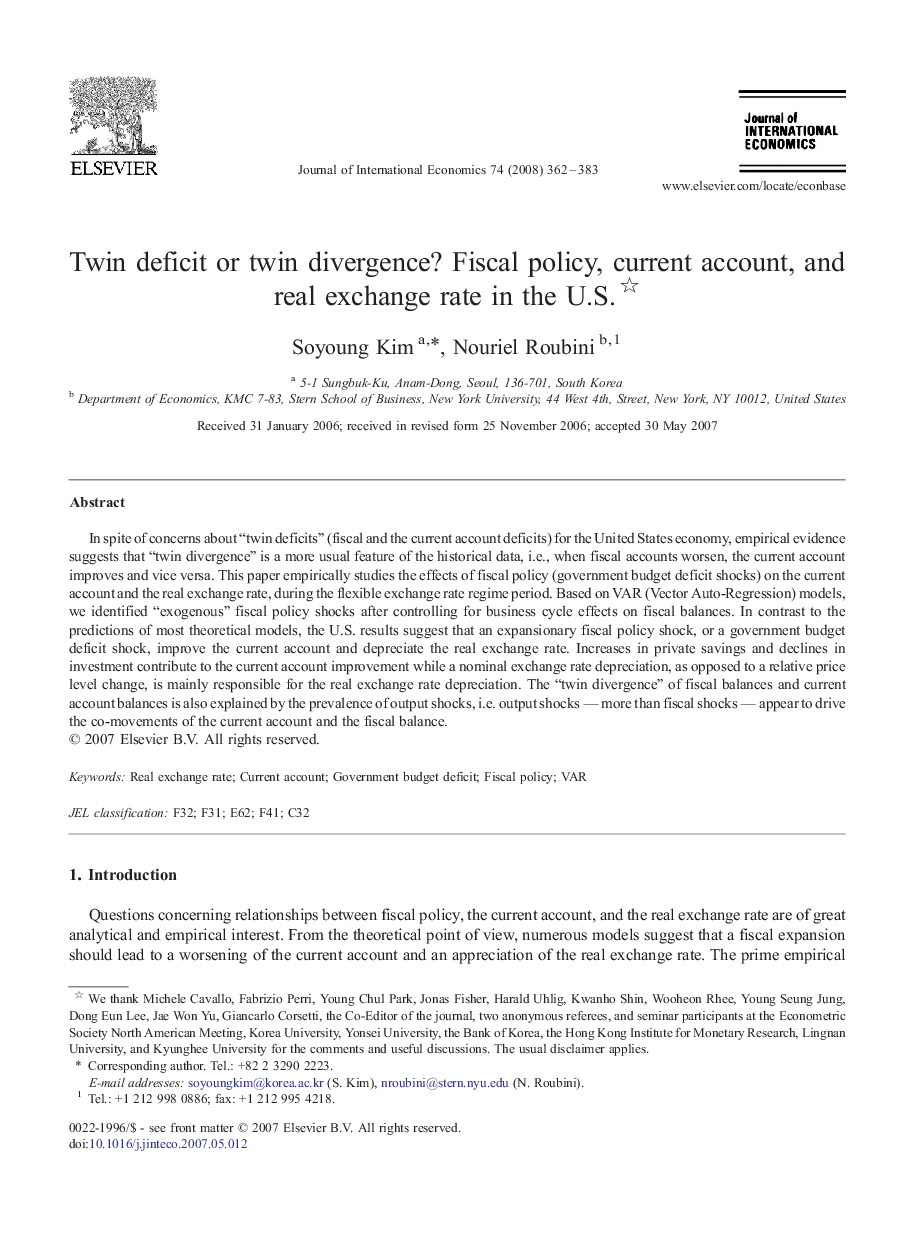| Article ID | Journal | Published Year | Pages | File Type |
|---|---|---|---|---|
| 962790 | Journal of International Economics | 2008 | 22 Pages |
Abstract
In spite of concerns about “twin deficits” (fiscal and the current account deficits) for the United States economy, empirical evidence suggests that “twin divergence” is a more usual feature of the historical data, i.e., when fiscal accounts worsen, the current account improves and vice versa. This paper empirically studies the effects of fiscal policy (government budget deficit shocks) on the current account and the real exchange rate, during the flexible exchange rate regime period. Based on VAR (Vector Auto-Regression) models, we identified “exogenous” fiscal policy shocks after controlling for business cycle effects on fiscal balances. In contrast to the predictions of most theoretical models, the U.S. results suggest that an expansionary fiscal policy shock, or a government budget deficit shock, improve the current account and depreciate the real exchange rate. Increases in private savings and declines in investment contribute to the current account improvement while a nominal exchange rate depreciation, as opposed to a relative price level change, is mainly responsible for the real exchange rate depreciation. The “twin divergence” of fiscal balances and current account balances is also explained by the prevalence of output shocks, i.e. output shocks - more than fiscal shocks - appear to drive the co-movements of the current account and the fiscal balance.
Related Topics
Social Sciences and Humanities
Economics, Econometrics and Finance
Economics and Econometrics
Authors
Soyoung Kim, Nouriel Roubini,
